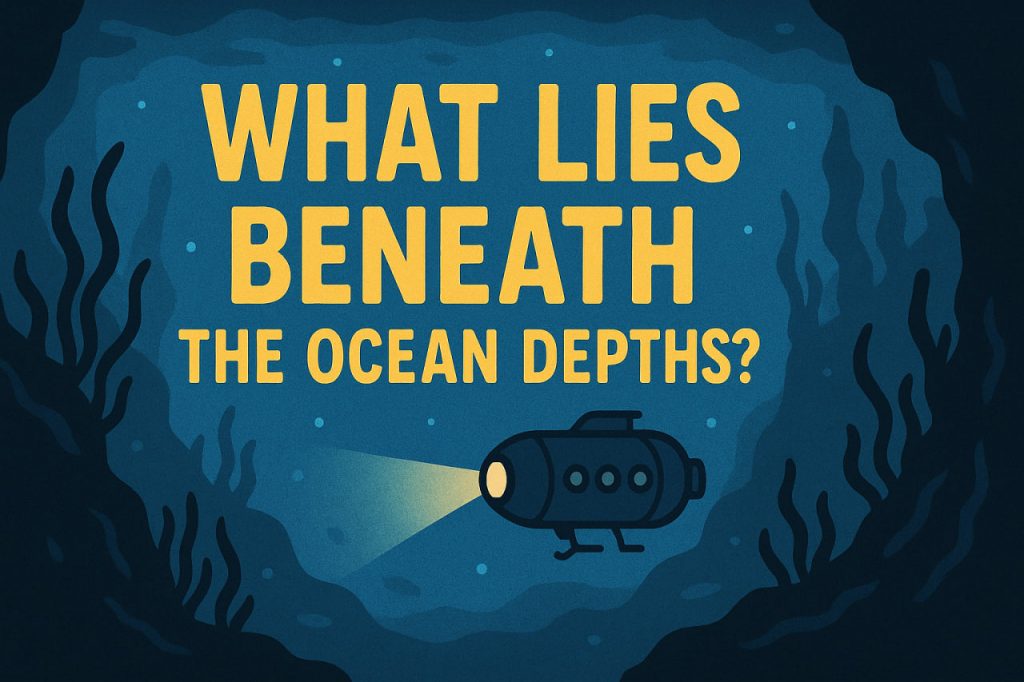The deep ocean remains one of the least explored and most mysterious parts of our planet. Covering more than 70% of Earth’s surface, the ocean hides vast underwater landscapes, unknown creatures, and geological activity that rivals anything seen on land. While satellites have mapped Mars in more detail than our ocean floor, scientists are only beginning to understand what lies beneath the waves.
Unexplored Depths
Most of the deep ocean lies below 200 meters — a zone known as the “midnight zone”, where sunlight never reaches. Pressures are extreme, temperatures near freezing, and visibility is close to zero. Because of these harsh conditions, only specialized submersibles and remotely operated vehicles can explore these regions.
Mysterious Life Forms
Deep-sea life includes bioluminescent organisms, bizarre invertebrates, and fish adapted to darkness and high pressure. Some creatures, like the anglerfish, use glowing lures to catch prey. Others, such as giant squids, remain elusive and rarely observed alive. New species are regularly discovered, showing how little we know about deep ocean ecosystems.
Underwater Landscapes
The deep ocean is home to trenches, underwater volcanoes, hydrothermal vents, and seamounts. The Mariana Trench, the deepest known point on Earth, reaches nearly 11 kilometers below sea level. Hydrothermal vents, where superheated water emerges from the sea floor, support unique life forms that rely on chemosynthesis rather than sunlight.
Shipwrecks and Sunken History
The ocean hides thousands of shipwrecks, lost planes, and ancient artifacts. From sunken warships to cargo vessels from ancient civilizations, many sites are yet to be discovered. These wrecks offer valuable insight into human history and maritime trade.
Unknown Sounds and Phenomena
Strange underwater sounds, like the “Bloop”, have been recorded by sonar equipment and remain unexplained. Sudden gas releases, underwater earthquakes, and magnetic anomalies add to the mystery of the deep. Some researchers believe entire ecosystems or geological features have yet to be observed.
Modern Exploration Efforts
Robotic submarines, oceanographic sensors, and deep-sea drones are changing our ability to explore the ocean floor. International missions such as NOAA’s Okeanos Explorer and Japan’s Shinkai 6500 are mapping deep-sea environments, collecting data on marine biology, geology, and climate.
Glossary
- Deep ocean – the part of the ocean below 200 meters, with extreme conditions
- Bioluminescent – able to produce light through chemical reactions
- Invertebrates – animals without backbones, common in deep-sea ecosystems
- Hydrothermal vents – openings in the ocean floor that emit heated water and minerals
- Chemosynthesis – a process where organisms use chemicals instead of sunlight to make food
- Seamounts – underwater mountains formed by volcanic activity
- Sonar – sound-based technology used to detect objects and map the sea floor
- Oceanographic sensors – devices that monitor temperature, pressure, salinity, and more


